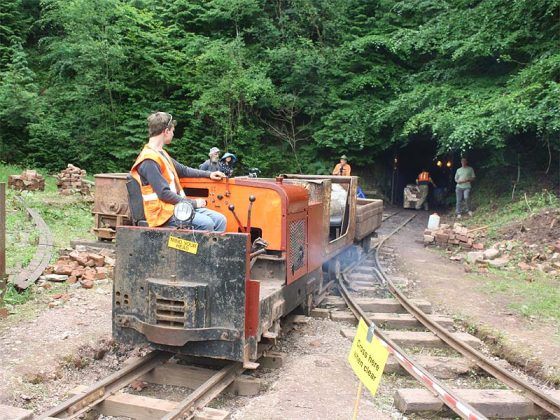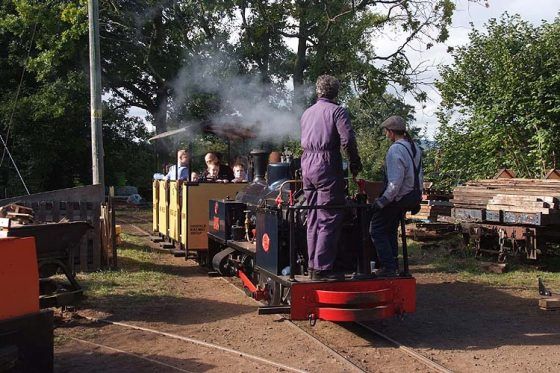September Open Day 2014

The other Forest of Dean September Open Days were lower-key than in 2013 as the Alan Keef works was ‘between projects’ and the Vintage Train had left Perrygrove. Nevertheless, a constant stream of visitors arrived at Lea Bailey many directed from our stall at Lea Lines which was much busier than the pictures suggest — you can’t take photographs while you are talking to potential visitors. The numbers at Clearwell were a little disappointing and next year we shall probably only operate there for the Summer Open Day.
At Lea Bailey, the W&R battery loco blew a fuse and retired, but the centre of attention was the newly restored Eimco rocker shovel which was taught how to throw bricks using a specially hired compressor. On the Sunday, we were very pleased to welcome some of Alan Keef’s weekend guests, maybe next year they will bring one of their steam locos with them. As the picture shows, they had to work for their entertainment as the Eimco derailed itself.
Apart from the very welcome publicity which will raise our profile, we collected some £300 in donations and sales.
https://www.youtube.com/watch?v=wcflwgDwm-s









































































